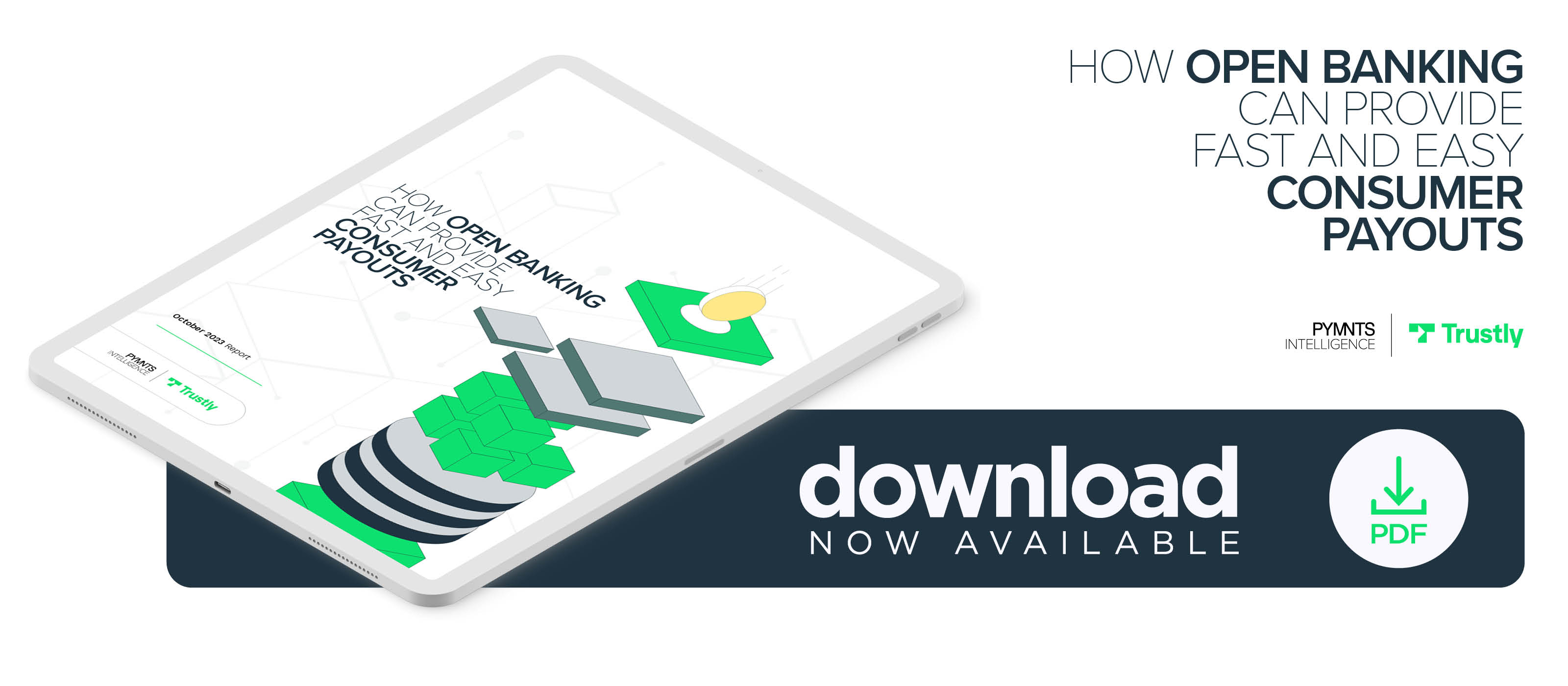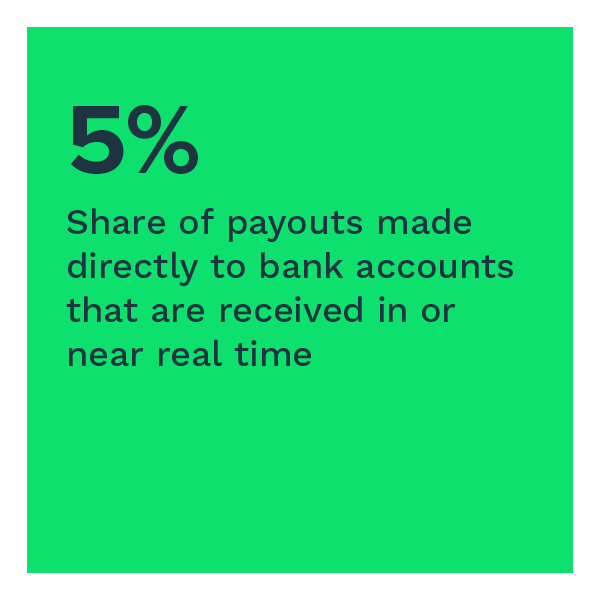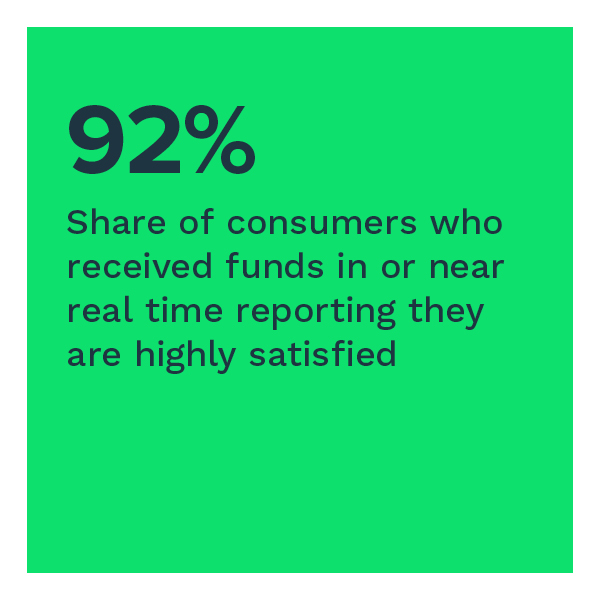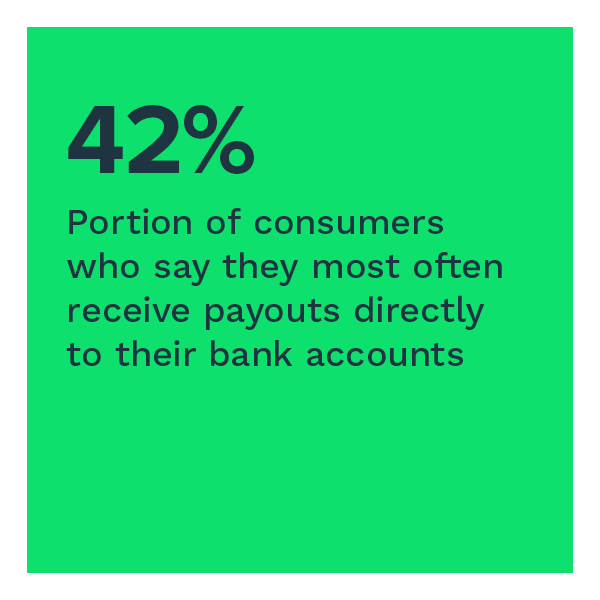95% of Payouts to Bank Accounts Don’t Happen in Real Time
 The rise of open banking is evolving banks as we know it. Instead of traditional banks keeping consumer financial data solely within their closed systems, banks and third-party service providers can now share it through application programming interfaces (APIs). When it comes to consumer payouts, open banking connectivity is a significant development, as it allows consumers to link their bank accounts directly using their existing bank logins and receive funds instantly.
The rise of open banking is evolving banks as we know it. Instead of traditional banks keeping consumer financial data solely within their closed systems, banks and third-party service providers can now share it through application programming interfaces (APIs). When it comes to consumer payouts, open banking connectivity is a significant development, as it allows consumers to link their bank accounts directly using their existing bank logins and receive funds instantly.
Despite the availability of open banking connectivity tools, nearly half of consumers receive most of their payouts directly to their bank accounts without a connectivity tool. This reliance on direct-to-bank transfers means that consumers receive payouts the most within a week. Just 5% of payouts to bank accounts took 60 seconds, suggesting that consumers opting for bank account transfers often do not have the option for an instant payout. Meanwhile, the ability to receive a payment in real time is very or highly influential when choosing a payment method for 43% of respondents. Thirty-nine percent say the same when choosing a merchant or service provider.
These are just some of the findings detailed in “How Open Banking Can Provide Fast and Easy Consumer Payouts,” a PYMNTS Intelligence and Trustly collaboration. This edition examines how consumers currently receive payouts from merchants, service providers or government agencies. We surveyed 2,559 U.S. consumers from May 12 to May 19 to explore the benefits of various payout options and consumer preferences when receiving payouts.
Direct-to-bank transfer is the most common way consumers receive payouts from public institutions.
Consumers can receive payouts from merchants, service providers and government agencies in several ways. Despite having many options, 42% of consumers say they most often receive payouts directly to their bank accounts, with another 11% saying they have done so at least once. Consumers are most likely to use direct-to-bank transfers for payouts from public and investment institutions: 71% of consumers who received payments from public institutions had them sent directly to their bank accounts, and 54% of consumers who received payments from investment institutions did the same.
Open banking connectivity features compete with digital wallets as a way for consumers to receive payouts directly to their accounts.
Manually providing account information continues to be the norm for payouts, perhaps due to unfamiliarity with connectivity features and lack of availability of digital wallet options. Even so, among digital methods for receiving payouts, consumers most prefer using digital wallets and connectivity features that allow them to receive payouts from merchant or service provider accounts directly using their existing bank credentials. Connectivity features are slightly more popular than digital wallets here, at 28% and 27%, respectively.
Younger consumers and frequent receivers are more comfortable using third-party tools to connect payouts directly to their bank accounts for quick and easy transfers.
The ability to link to a bank account directly and receive instant transfers influences younger consumers’ choice of merchants and payment methods. Using such connectivity tools is how a significant share of younger consumers prefer to receive funds. Meanwhile, 48% of frequent or heavy receivers — consumers who have received more than 50 payouts in the last year — report that connectivity tools are their preferred method.
Digital-savvy consumers are interested in open banking connectivity and the promise of real-time payouts. Download the report to learn about consumer thoughts on open banking connectivity and real-time payments for these transactions.

